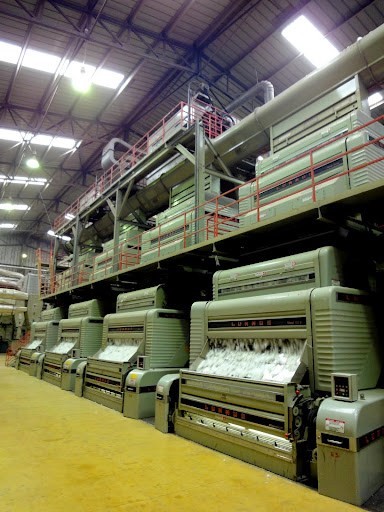Harvey “Rodge” Rodgers has a knack for long-range planning when it comes to his three farming entities, and as a partner in both Mill Creek Gin and Riverside Air flying service. He is working on a project called “Field to Closet” he hopes will utilize his three farming operations, the gin, and flying service to collectively produce and deliver cotton fiber with specified quality characteristics to the right customer for their textile products.
Rodgers understands what it takes to produce a cotton crop each season. He also understands all the variables that are within his control during that process. The project started through his participation in the New Product Evaluator program with Deltapine who is working with Jernigan Global to raise the awareness and engage retailers to use more cotton.
“In the past, once we harvested our cotton, our part was done, but this is an attempt to connect us with the textile industry to show them a value in working with U.S. cotton producers through this type of program,” says Rodgers.
Traceability, varieties and fiber quality
The harvester technologies today are providing more information to growers and ginners than ever before. “The information loop between the farmer, the ginner, the USDA Classing Office, and back to the farmer brings value to the table like we’ve never had,” says Rodgers.
“We can track seed varieties, the field where the cotton was harvested, longitude/latitude, moisture measurements, and a host of other value-added attributes related to the module, the producer and the farming operation.”
With GMOs being such a point of contention with many consumers in some parts of the world, Rodgers thinks there may even be a possibility to market non-genetically modified cotton if an end-user wants it for a segment of the consumer market.
“All cotton varieties being used today have come so far. There are some real workhorse varieties across the board that are allowing us to produce fibers with staple lengths that rival some Pima growths,” says Rodgers. “We continue to learn how to manage them better whether that management includes growth regulators, irrigation, or other inputs that all can be regulated and metered out to help meet needed fiber specifications.”
Preserve fiber quality
The late Bill Heaton, a well-known Mississippi Delta cotton producer, told Rodgers many years ago that cotton fiber will never be any better than when it comes off that stalk and goes into the picker. “I also remember him saying that it’s up to me as a farmer and a ginner to do the best I can to preserve that fiber quality at the gin,” says Rodgers. “Now, we’re doing that in the field as well.”
From 2008 to 2018, the average staple length of U.S. upland cotton has gone from 35.7 to 36.5 inches. “The real improvement can be seen over a greater period of 15 years,” says Vikki Martin, vice president, Fiber Competition, Cotton Incorporated. “From 2004 until 2018, the average staple length went from 34.9 to 36.5 inches, an overall average upland increase of 1.6 inches. I consider that increase to be significant.”
Mill Creek Gin, located just outside of Clarksdale, Miss., operates a three-stand Lummus 170 gin plant. “It’s a state-of-the-art gin, so if we have a customer who has a specific fiber quality in mind, we can work with our gin manager to meet those specifications,” says Rodgers. “In the past, there were many more public gins, but today there are many more private ginning operations, so we can manage our product more closely than ever before.”
Rodgers estimates a partnership with a textile company to accomplish this scenario would need to be set up eight to 10 months in advance of planting. “It would take careful planning because it’s basically a puzzle with each piece needing to be carved into place,” said Rodgers.


